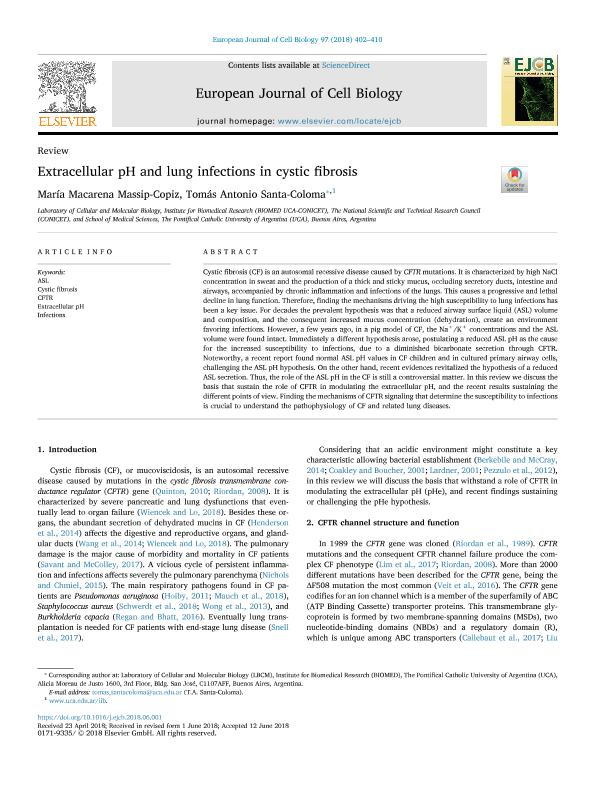Artículo
Extracellular pH and lung infections in cystic fibrosis
Fecha de publicación:
08/2018
Editorial:
Elsevier Gmbh
Revista:
European Journal Of Cell Biology
ISSN:
0171-9335
Idioma:
Inglés
Tipo de recurso:
Artículo publicado
Clasificación temática:
Resumen
Cystic fibrosis (CF) is an autosomal recessive disease caused by CFTR mutations. It is characterized by high NaCl concentration in sweat and the production of a thick and sticky mucus, occluding secretory ducts, intestine and airways, accompanied by chronic inflammation and infections of the lungs. This causes a progressive and lethal decline in lung function. Therefore, finding the mechanisms driving the high susceptibility to lung infections has been a key issue. For decades the prevalent hypothesis was that a reduced airway surface liquid (ASL) volume and composition, and the consequent increased mucus concentration (dehydration), create an environment favoring infections. However, a few years ago, in a pig model of CF, the Na+/K+ concentrations and the ASL volume were found intact. Immediately a different hypothesis arose, postulating a reduced ASL pH as the cause for the increased susceptibility to infections, due to a diminished bicarbonate secretion through CFTR. Noteworthy, a recent report found normal ASL pH values in CF children and in cultured primary airway cells, challenging the ASL pH hypothesis. On the other hand, recent evidences revitalized the hypothesis of a reduced ASL secretion. Thus, the role of the ASL pH in the CF is still a controversial matter. In this review we discuss the basis that sustain the role of CFTR in modulating the extracellular pH, and the recent results sustaining the different points of view. Finding the mechanisms of CFTR signaling that determine the susceptibility to infections is crucial to understand the pathophysiology of CF and related lung diseases.
Palabras clave:
ASL
,
CFTR
,
CYSTIC FIBROSIS
,
EXTRACELLULAR PH
,
INFECTIONS
Archivos asociados
Licencia
Identificadores
Colecciones
Articulos(BIOMED)
Articulos de INSTITUTO DE INVESTIGACIONES BIOMEDICAS
Articulos de INSTITUTO DE INVESTIGACIONES BIOMEDICAS
Citación
Massip Copiz, María Macarena; Santa Coloma, Tomás Antonio; Extracellular pH and lung infections in cystic fibrosis; Elsevier Gmbh; European Journal Of Cell Biology; 97; 6; 8-2018; 402-410
Compartir
Altmétricas




